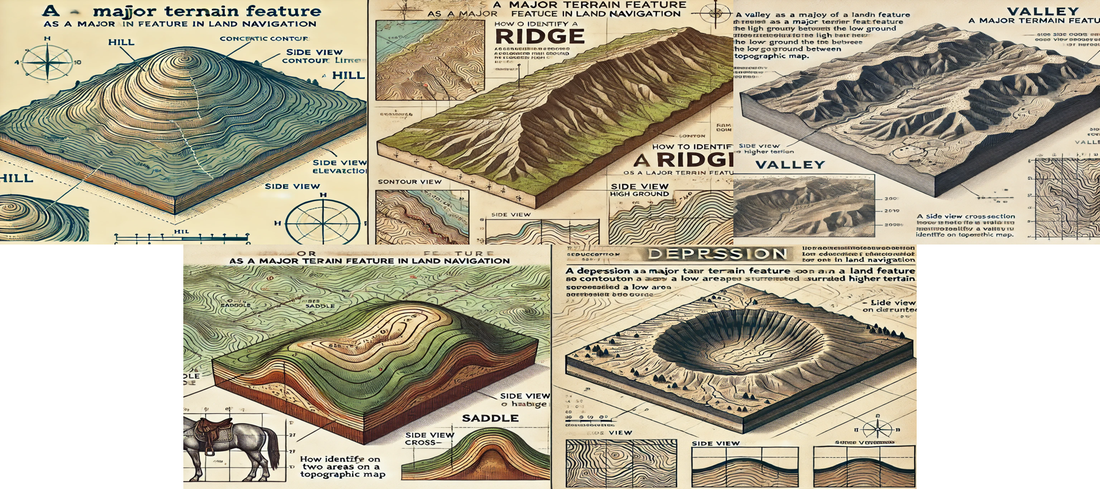Mastering Terrain Features: The Foundation of Land Navigation
Why Terrain Features Matter for Survival
When GPS fails, land navigation skills are your last line of defense. If you can't read the landscape, you risk getting lost, wasting energy, and putting yourself in danger. Whether you're deep in the backcountry, on a tactical mission, or bugging out from an emergency, understanding terrain features will keep you moving smart and safe.
At Squatch Survival Gear, we build rugged, American-made packs designed to support you in any environment. But your gear is only as good as your ability to navigate with it. Let’s break down the essential terrain features that can guide your movement when it matters most.
The Five Major Terrain Features
Every land navigator—whether military, survivalist, or outdoorsman—needs to know these:
1. Hill
A high point with sloping terrain in all directions. Use it for visibility, signaling, or as a landmark to orient yourself. Hills are commonly found on topographic maps as concentric circles—the smaller the inner circles, the higher the elevation.
2. Ridge
A long, narrow strip of high ground. Travel along ridges for easy navigation, but be aware of exposure to wind and threats. On a map, ridges are shown as closely packed contour lines forming an elongated shape.
3. Valley
Low ground between higher terrain, often with water sources. Valleys are natural travel corridors, but they can also funnel movement—be mindful of security. On maps, valleys appear as U-shaped or V-shaped contour lines pointing uphill.
4. Saddle
A dip between two hills or peaks. Great for crossing ridges with minimal elevation gain—look for them on your topographic map to plan efficient routes. Saddles are shown as hourglass-shaped contour lines between two higher points.
5. Depression
A low area surrounded by higher ground. Depressions can provide concealment, but avoid them if flooding is a risk. They are shown on a topo map as closed contour lines with hachure marks (short inward lines) indicating a drop in elevation.
This deep dive into terrain features is just the start. In the next posts, we’ll cover minor terrain features, practical navigation techniques, using terrain for survival scenarios, and building a bug-out route that actually works.
🔹 Stay ahead of the curve. Sign up for our email list to get the next blog post first. [Subscribe Here →] scoll to the bottom
At Squatch Survival Gear, we don’t just sell gear—we help you develop the skills to survive. Stay sharp, stay prepared, and never get lost.
🔹 Gear Tip: Squatch Survival Gear’s Rock Ape Pack is built for multi-day missions in rugged terrain. With an ergonomic internal frame and military-spec construction, it’s designed to keep you comfortable and moving no matter the environment.

